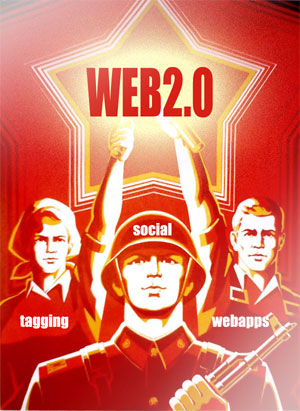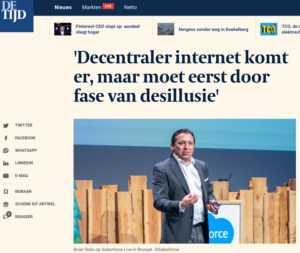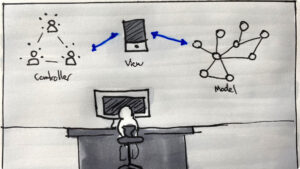
If you were around Silicon Valley during the 90s, then I’m sure the current Web2.0 frenzy seems familiar. If you’re fresh out of college, or if you’re a recent transplant, welcome to Bubble 2.0.
Not that this bubble is going to burst with the same “pop” as 1.0, but it does share all too familiar nuances of hype and misdirection. There are even calls to ditch 2.0 for 3.0 already.
Let’s just assume that everyone here understands the history behind 2.0. For the sake of discussion, I am not describing what 2.0 is or isn’t, as it seems to span everything it should be and everything it never was mean to be. Just take a look at all of the leading blogs, stories on Digg and Technorati, etc. and you will see that in every comment section are Opus Dey fanatics correcting everyone on their definition and perception of the “real 2.0.” Let’s just not go there this time…
This post explores the similarities and differences of the mid 90s to the mid 00s. Is this the new gold rush? Is this dotbomb 2.0? Are we setting the stage for another market crash? You know, I don’t really think so. Granted, an arduous cloud of hype ensues us, however, there are different drivers and market conditions that exist today because of the fallout from 1.0.
Where Web1.0 sites were places to visit, Web2.0 is where you go to get something done — and it’s usually with other people.
For example, the end-game here isn’t the “given” IPO. NASDAQ settled back. Dow retreated. They’re not affected by 2.0 – at least not yet. Internet companies nowadays are focusing on building content and community, but using more realworld business models – which are usually ad-driven. They’re either looking at building sustainable businesses or looking at an exit strategy, which entail acquisition; in many cases from either Yahoo or Google. Gone are the days of “brand or revenue at any cost!” More and more businesses are actually focusing on developing unique solutions for a variety of consumers and businesses. Plus it’s giving useful, creative, and fun URLs to the .org and .us extensions.
Now, throw Web2.0 into the mix, and we see a bunch of new technologies, buzz words, and “me too’s” emerging that are quickly cluttering and confusing the marketplace.
However, there are those such as Michael Arrington, Emily Chang, Stowe Boyd, Richard MacManus, and Ken Yamosh, (and the Web 2.0 Workgroup) helping us cut through the clutter. They, among others, have become rock stars in the web2.0 realm and are highly sought after and are some of the most influential people online today. Arrington alone has built a blog empire from scratch and it doesn’t appear to be slowing down – although he has since dropped the”tracking web 2.0 tagline. See related story here.
According to a recent article in BusinessWeek, Web 2.0 represents a paradigm shift on the net. And though these Web 2.0 services have succeeded in luring millions of subscribers, they have yet to impact business. Are there 2.0 success stories as of yet?
In the meantime, what’s next for Web2.0? Bets are pointing to how it will impact the enterprise – which many are already dubbing enterprise 2.0. Yes, even though we know “enterprise” must be on version 25 by now, the so-called Enterprise 2.0 will flatten corporate hierarchies, enhancing (and blurring) the lines between managers and employees and between the company and its partners and customers.
According to Don Tapscott, CEO of the Toronto tech think tank New Paradigm and co-author of The Naked Corporation: “It’s the biggest change in the organization of the corporation in a century.”
For example, I ran across ConnectBeam at the last STIRR event. According to the company, it brings the Web 2.0 social collaboration framework to the enterprise and also addresses the specific requirements inherent to a collaboration system in the enterprise.
The application integrates features of social bookmarking, user generated content, content tagging, group and community sharing and collaboration – under a framework of enterprise level data security, role based privacy, and user and administrator level control.
Also at STIRR, I overhead Ivaylo Lenkov, CEO of SiteKreator describe the company’s public BETA of its new Business Edition web site creation and hosting solution. While it’s not necessarily targeted at the enterprise, SiteKreator Business Edition enables small-to-medium-sized businesses and independent professionals instantly create a robust and effective online presence that increases business opportunities, accelerates brand recognition and converts visitors into repeat customers. With a set of elegant designs, comprehensive branding options and interactive Web 2.0 features, SiteKreator Business Edition provides a one-stop solution for creating stylish and engaging Web sites without any technical or artistic expertise necessary.
Another company thats appealing to business users is Vyew (pronounced view). Sometimes described as WebEx-lite, the company desribes Vyew as a browser-based conferencing and always-on collaboration platform that provides instant visual communication without the need for client downloads or installations. Vyew’s multimedia workspace enables shared viewing of presentations, files, photos and one’s desktop. Included are tools for whiteboarding, annotating, text chatting, and phone conferencing. I hear that Vyew 2.0 is already in private BETA.
ConnectBeam, SiteKreator, and Vyew are only a few of the up-and-coming Web 2.0 companies that are reaching out to businesses with a legitimate shot at turning profits. If you know of or work with a web 2.0 company that’s targeting businesses or the enterprise, please send information to PR2point0@gmail.com
This is a game where in order to compete, you need to be on the field – not on the sidelines or on the benches. Game on!
Digg this article!
Tags: PR, Web2.0, michael arrington, bubble2.0, techcrunch, stirr, sitekreator, vyew, connectbeam, webex, enterprise futureworks web 2.0 pr2.0 pr 2.0





I thought this was a great post. I think one key aspect of “web 2.0” is that is adapting to the changing location of work. Now more than ever, one can work from anywhere and have all of the tools and resources that you would have back in the office. As someone who does most of my work from back porch, I am loving all of these changes.
-clingie
Sorry, but the bloggers you name are not helping ‘cut through the clutter’ in any way. They are the ones finding all the clutter. Cutting through clutter implies negative feedback, which is rarely found across those sites. They are great to read, and key to staying abreast of Web 2.0 ‘happenings’ but not as you described.
All true. I don’t think we’ll see the same thing happen again. I do however believe that when the smaller dust cloud rises up and settles it will be the companies driven the technologies behid the scenes that make the second movement happen be the ones who survive. As before, the ones who deliver real business value to others and therefore themselves.